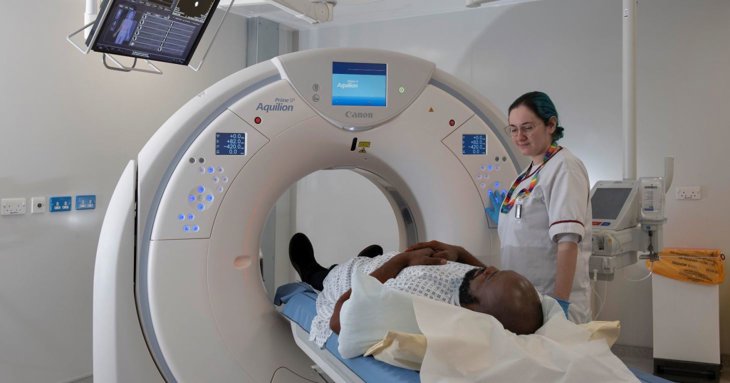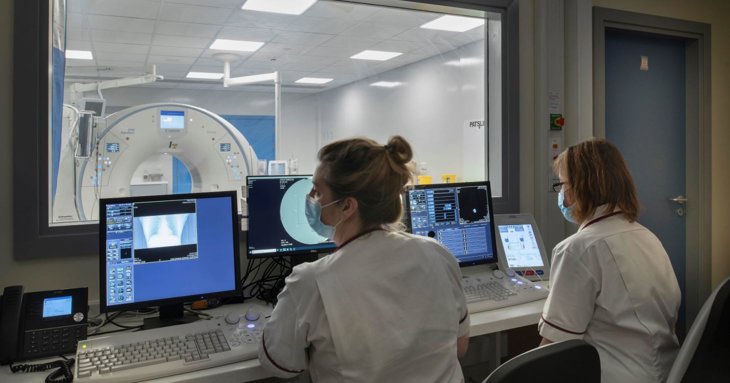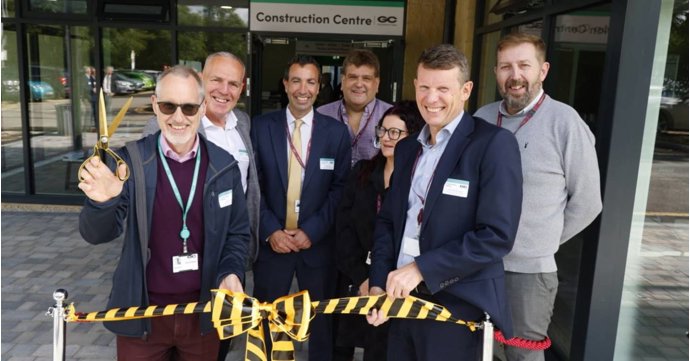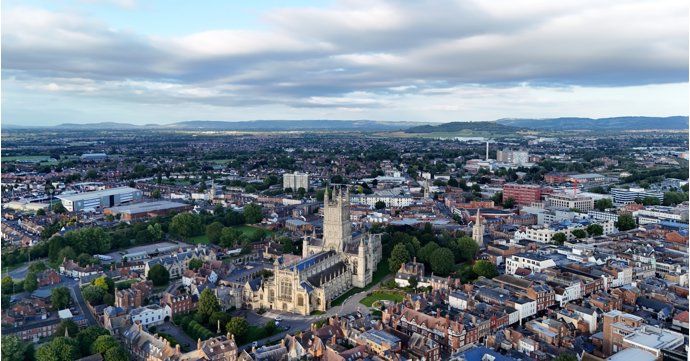Patients in Gloucestershire are set to benefit from a new image-guided interventional surgery (IGIS) hub, offering less invasive procedures and lower hospital admission times by 2024.
The 24-hour IGIS facility at Gloucester Royal Hospital will bring interventional radiology, vascular surgery and interventional cardiology into one hub — with a satellite IGIS service operating from Cheltenham General Hospital, too.
Architects Roberts Limbrick, which has a base in Gloucester and a long-standing relationship with Gloucestershire Hospitals, was appointed to work on the project, redeveloping and refurbishing the existing radiology and nuclear medicine departments at Gloucester Royal to house new equipment for the IGIS hub.
Image-guided surgery, which describes any surgical procedure where the surgeon uses instruments with live imagery to guide the procedure, uses a combination of cameras, ultrasonic and x-ray imaging to capture a patients' anatomy and the surgeon's movements — all supported by new, state-of-the-art specialist equipment.
Roberts Limbrick was tasked with reorganising the current radiology and nuclear medicine departments to make way for this new equipment, while allowing the department to continue operating — resulting in a complex, phased refurbishment process which began in late 2022.

Mark Jones, associate director and healthcare lead at Roberts Limbrick, explained: 'There's a huge amount of technical information to consider and disseminate when developing this type of project, especially when we're looking at IGIS facilities, which require theatre-like standards in order to function.
'We have a stepped design approach when working on a project of this type. Firstly, we look to understand the room requirements from the clinicians' perspective. We begin by understanding room use and the procedures to be undertaken. No two projects are the same, so we consult with a wide range of staff and room users before beginning the design. Then we collaborate with specialist equipment suppliers.
'We then begin to understand how the room is going to be equipped; and then we consider the space planning challenges. A lot of the work in existing hospitals relates to refurbishing existing spaces in order to renew them and bring the up to current standards required by the new equipment installations.
'After this, we consult with fire officers, departmental managers, medical gas providers, infection control and medical physicists, all of whom assist in defining the specialist design requirements for these complex rooms.
'Finally, we're always prepared for change. We might be developing a design for a period of time where procurement timescales can be lengthy, whilst equipment models and operational procedures are constantly being updated. A successful project will have flexibility designed-in so we're constantly prepared for change in all our healthcare schemes.'
Roberts Limbrick also works closely with radiation protection officers to assess the necessary safety requirements. The x-ray, gamma camera, catheter labs and IR rooms require lead lining to the walls, doors and ceilings as well as glazed screens to control room areas, to protect surrounding rooms from x-ray exposure.

Jones continued: 'The IGIS hub is a new way of thinking for Gloucester Royal Hospital. It brings together a whole range of services and medical procedures in new catheter laboratories, interventional radiology theatres, x-ray, ultrasound rooms and a nuclear medicine gamma camera room.'
Bringing together all of these disciplines alongside outpatient waiting areas, reporting offices and a recovery ward forms the IGIS hub which will not only give surgeons greater control over the procedures and real-time feedback, but offer reduced hospital admission time for patients, too.
It's not the first time Roberts Limbrick has worked with Gloucestershire Hospitals — in fact, the practice has a long-standing relationship with the NHS Trust and has worked on healthcare projects in the county for over a decade.
Recent projects include the installation of twin CT scanners and an MRI unit at Gloucester and a reconfiguring of the radiology and oncology departments at Cheltenham General Hospital. It's also previously responsible for designing the new community hospitals in Tewkesbury, Moreton in Marsh and Dursley.
Jones explained: 'We have a close working relationship with Gloucester and Cheltenham hospitals. We get involved early from the ground level up, discussing the project with the department heads, clinicians, nurses and general staff, taking their comments on board. We work with the project managers, structural engineers and mechanical and electrical consultants and sometimes the patients as well.'
Roberts Limbrick has a wealth of experience in the Gloucestershire healthcare sector; a remit which also includes retirement and later living. The practice also recently delivered the new facilities at Cheltenham Crematorium, creating a sensitive and comfortable setting for visitors and staff.
With offices in Gloucester, Newport and London, Roberts Limbrick is presently working on hospital projects in Llandrindod Wells, Cardiff and Milton Keynes, as well as Cheltenham General and Gloucester Royal.
Jones said: 'Healthcare is what I really enjoy doing and find the most fulfilling. It's rewarding because the facility is there to help people; to make sure everyone is healthy and to help the people in need.'
Work on the new IGIS hub at Gloucester Royal Hospital began in late 2022 and is due to be completed by 2024.




















